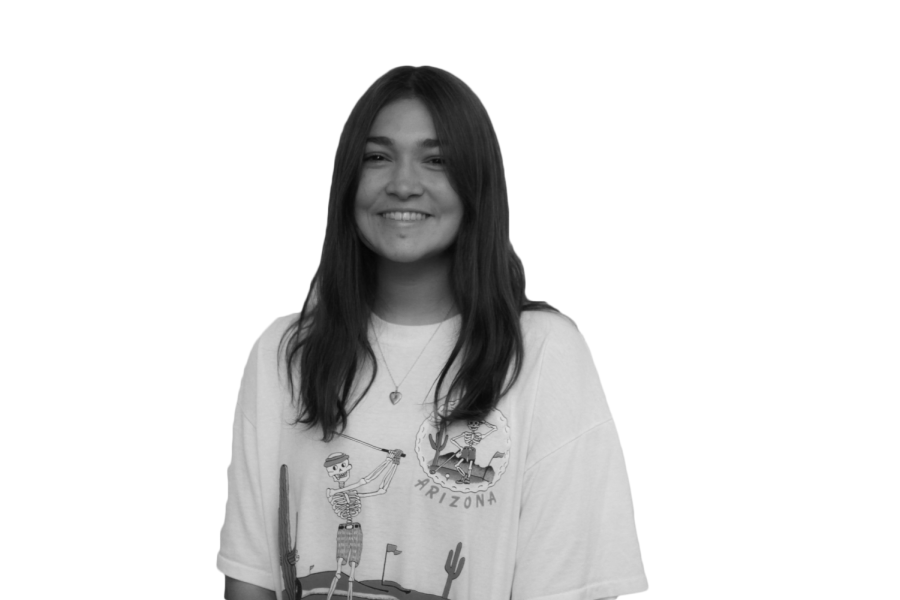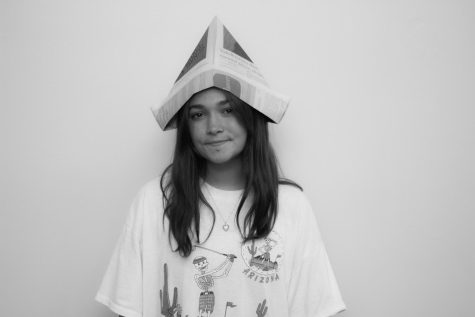Our online struggle shouldn’t be one dimensional
March 24, 2023
After seeing the headline, “What It’s Like to Be a Teenager Now,” I was curious about the New York Times’ ability to emulate what the current adolescent experience is, especially living in the ghost of the pandemic. The article’s intent was to highlight the exceptional art that young people submitted in response to their prompt: What can you show us that might help explain what it’s like to be a teenager right now? Out of 3,000 submissions, 24 were selected by the panel of “educators, Learning Network staff and Times journalists, as well as teenagers who have won previous Learning Network contests.” After a few minutes of scrolling through the chosen images, I developed an irritation with the unintentional, yet overwhelming, theme: technology consumes us.
One photographer highlighted a high school graduation. The students are dressed in their gowns and are seated next to their classmates, but only one student is looking at the camera. Six other students have their attention exclusively focused on their phones. Another digital work shows a crowd through the lens of a cell phone. Pictured are other teenagers also filming whatever was in front of them as well.
Isolated, the pieces tell important stories; we’re still kids, we are paying attention to the world around us, we fill empty space with consumption, etc. These were pieces made by teenagers to capture their individual struggle over the past few years, and were individually incredible works of art. Yet, the attempt by the judges – the majority of whom are adults – to confine a generation’s worth of struggle and desperation into 24 photos feels suffocating.
Continually, the world around us defines our generation’s relationship with technology as negative. We’re told that our dependence on social media creates all of our problems, yet we’re rarely given the tools to change it. Partly, the separation comes from the fact that we are the first generation to experience such a heavy reliance on media for social interactions. Our parents didn’t grow up navigating their online and physical presence, so they are oftentimes unable to offer us flawless solutions to the complex web of our problems.
I – like all of my peers – have confronted the harmful, dehumanizing sides of social media. But I also think that too often this interaction is simplified to the uncomplicated fix of quitting; even if you don’t participate, that doesn’t mean you aren’t affected by it. This solution also fails to acknowledge the pressures of school and our future that are just as much, if not more, the source of staggering anxiety and depression rates.
Blanket statements are thrown over our generation’s reputation to be chronically online, and whether or not that is true about you, that doesn’t mean it’s solely a negative transaction. We maintain and form friendships with the internet. We find community online when we can’t have it in person. We keep in touch with family and friends that are far away. We gain new knowledge and learn how to navigate a deceptive and difficult world.
We should decide for ourselves the nature of our relationship with technology. If you decide that social media isn’t something you want to engage with, make that decision for yourself, and if you want to use it, it’s possible to have a healthy relationship with it as well. And when we struggle, like any other generation, we should be met with understanding and ample support to deal with it, not just punishment because our actions were ‘self-inflicted.’ Telling us that our individual role is wrong doesn’t allow us to grow.
In the end, “What It’s Like to Be a Teenager Now” and the overwhelming tendency to associate our generation with negative online interactions didn’t make me fearful of our relationship with technology; it made me more appreciative and defensive. The fact that our community looks different than others doesn’t make it any less real; it can also be beautiful. Like anything in life, we can fall into a hopeless and flawed system, but we need to receive and employ empathy in order to build a constructive, positive community.


